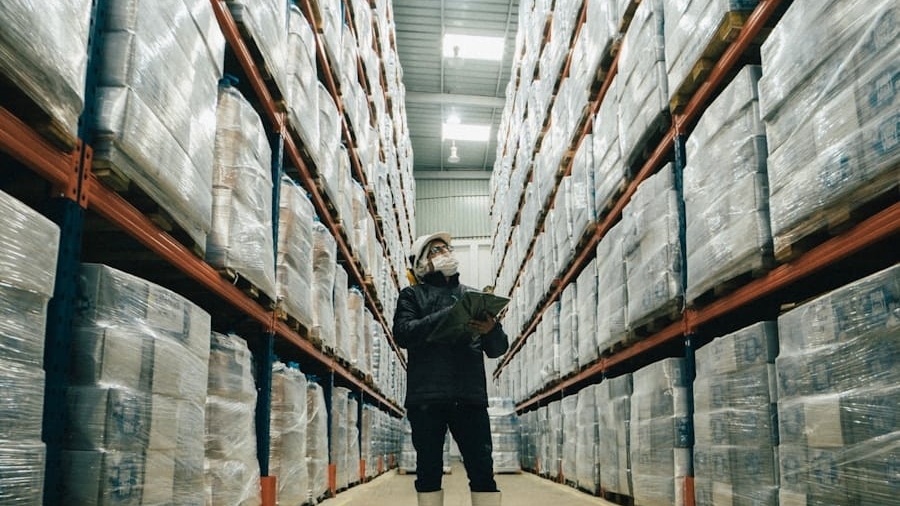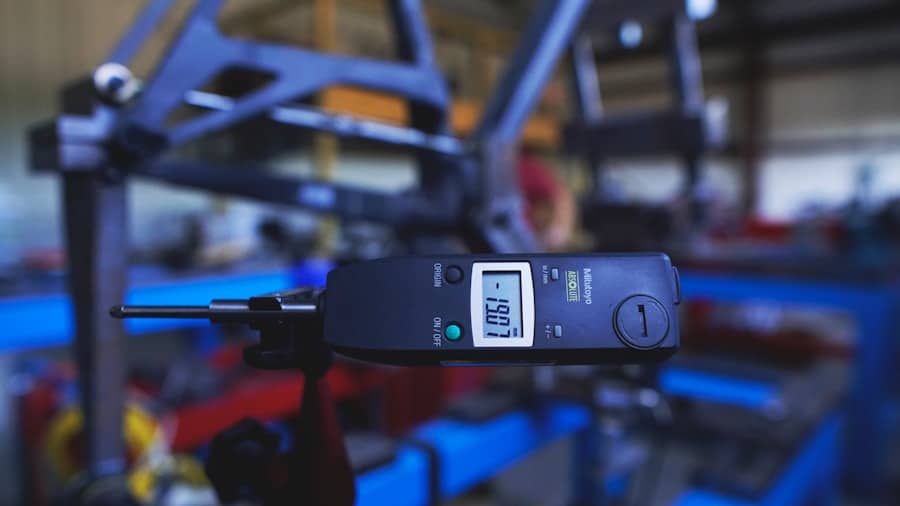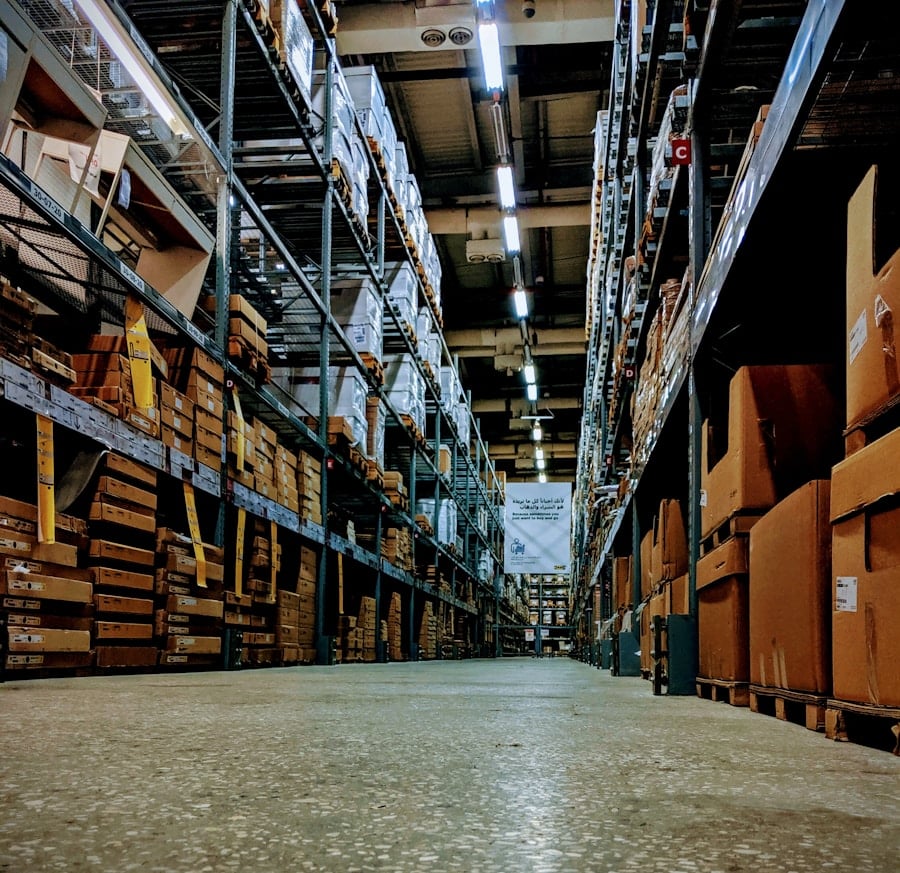Augmented Reality (AR) glasses are rapidly transforming the landscape of warehousing and logistics, offering innovative solutions that enhance operational efficiency and accuracy. These wearable devices overlay digital information onto the physical world, allowing workers to interact with their environment in unprecedented ways. As the demand for faster and more efficient supply chain operations continues to grow, AR glasses have emerged as a pivotal technology that can streamline processes, reduce errors, and improve overall productivity.
The integration of AR into warehousing and logistics is not merely a trend; it represents a fundamental shift in how businesses approach inventory management, order fulfillment, and workforce training. The adoption of AR glasses in these sectors is driven by the need for real-time information and enhanced decision-making capabilities. With the ability to visualize data directly in the line of sight, workers can access critical information without diverting their attention from their tasks.
This seamless integration of digital content into the physical workspace allows for a more intuitive interaction with complex systems, ultimately leading to improved outcomes. As companies seek to leverage technology to gain a competitive edge, AR glasses stand out as a powerful tool that can redefine traditional practices in warehousing and logistics.
Key Takeaways
- AR glasses in warehousing and logistics are revolutionizing the industry by providing hands-free access to information and real-time data visualization.
- The use of AR glasses has led to increased efficiency and accuracy in picking and packing processes, reducing errors and improving overall productivity.
- Streamlined inventory management is made possible with AR glasses, allowing workers to easily locate and track inventory items within the warehouse.
- AR glasses enhance safety and training for workers by providing real-time guidance and instructions, reducing the risk of accidents and improving skill development.
- Real-time data visualization and analytics through AR glasses enable workers to make informed decisions and optimize warehouse operations.
Increased Efficiency and Accuracy in Picking and Packing
Improved Efficiency and Accuracy
This hands-free approach allows employees to navigate the warehouse more effectively, reducing the time spent searching for items and minimizing the risk of picking errors. A study conducted by DHL demonstrated that using AR glasses for picking tasks resulted in a 25% increase in productivity compared to conventional methods. Workers equipped with AR technology were able to complete orders more quickly while maintaining a higher level of accuracy.
Contextual Information and Alerts
The glasses can also provide contextual information, such as alerts for items that are running low in stock or reminders for special handling requirements. This level of detail not only streamlines the picking process but also ensures that customers receive the correct products in a timely manner, ultimately enhancing customer satisfaction.
Enhanced Customer Experience
By ensuring that customers receive the correct products on time, AR glasses contribute to a higher level of customer satisfaction. This, in turn, can lead to increased customer loyalty and retention, ultimately driving business growth.
Streamlined Inventory Management with AR Glasses
Inventory management is a critical component of warehousing and logistics, and AR glasses offer innovative solutions to streamline this process. By providing real-time visibility into inventory levels and locations, these devices enable workers to manage stock more effectively. For instance, AR glasses can display information about product availability, expiration dates, and storage conditions, allowing employees to make informed decisions on restocking and inventory rotation.
This capability is particularly valuable in environments where perishable goods or time-sensitive products are involved. Moreover, AR glasses can facilitate cycle counting and stocktaking processes by guiding workers through the warehouse and highlighting items that need to be counted or verified. This not only accelerates the inventory auditing process but also reduces the likelihood of discrepancies between physical counts and recorded data.
Companies like Walmart have begun experimenting with AR technology for inventory management, reporting significant improvements in accuracy and efficiency. By integrating AR glasses into their operations, businesses can achieve a more agile inventory management system that responds quickly to changing demands.
Enhanced Safety and Training for Workers
Safety is paramount in warehousing and logistics environments, where workers are often exposed to various hazards. AR glasses can play a crucial role in enhancing safety protocols by providing real-time guidance and alerts. For instance, these devices can display safety instructions or highlight potential hazards in the worker’s immediate environment, helping to prevent accidents before they occur.
Additionally, AR technology can assist in ensuring compliance with safety regulations by reminding workers of necessary precautions during specific tasks. Training new employees is another area where AR glasses can make a significant impact.
With AR glasses, new hires can receive on-the-job training through interactive tutorials that overlay instructions directly onto the equipment or processes they are learning about. This immersive training experience not only accelerates the learning curve but also enhances retention by allowing trainees to engage with the material actively. Companies like Amazon have begun implementing AR-based training programs, resulting in faster onboarding times and improved worker confidence.
Real-time Data Visualization and Analytics
The ability to visualize data in real-time is one of the most compelling features of AR glasses in warehousing and logistics. These devices can present key performance indicators (KPIs), operational metrics, and other critical data directly within the worker’s line of sight. This immediate access to information empowers employees to make informed decisions quickly, enhancing overall operational efficiency.
Furthermore, AR glasses can facilitate data-driven decision-making by providing insights into workflow patterns and operational bottlenecks. By analyzing data collected through AR interactions, companies can identify areas for improvement and implement targeted strategies to optimize processes.
For instance, if data reveals that certain picking routes consistently lead to delays, managers can adjust workflows or reconfigure warehouse layouts accordingly. This level of analytics not only improves day-to-day operations but also supports long-term strategic planning.
Improved Communication and Collaboration
Enhancing Communication with Visual Context
workers to share information in real-time. For instance, if a worker encounters an issue with equipment or inventory discrepancies, they can use their AR glasses to capture images or annotate digital overlays that illustrate the problem. This visual context allows team members or supervisors to understand the situation quickly and provide assistance without needing lengthy explanations.
Fostering Collaboration Across Departments
AR technology enables collaboration among different departments within an organization. For example, warehouse staff can communicate directly with supply chain managers or customer service representatives through AR interfaces, ensuring that everyone is on the same page regarding order statuses or inventory levels.
Improving Operational Agility
This interconnectedness reduces delays caused by miscommunication and enhances overall operational agility. Companies that leverage AR for communication often report improved teamwork and faster problem resolution.
Integration with IoT and Automation Technologies
The integration of AR glasses with Internet of Things (IoT) devices and automation technologies represents a significant advancement in warehousing and logistics operations. IoT sensors can provide real-time data on equipment performance, environmental conditions, and inventory levels, which can be visualized through AR interfaces. For instance, if a temperature sensor detects that a refrigerated area is exceeding safe limits, AR glasses can alert workers immediately, allowing them to take corrective action before products are compromised.
Moreover, when combined with automation technologies such as robotics and conveyor systems, AR glasses can enhance operational efficiency even further. Workers can receive visual cues on how to interact with automated systems or where to place items on conveyor belts for optimal processing. This synergy between human workers and automated systems creates a more cohesive workflow that maximizes productivity while minimizing errors.
Companies like FedEx are exploring these integrations to create smarter warehouses that respond dynamically to changing conditions.
Future Potential and Challenges of AR Glasses in Warehousing and Logistics
The future potential of AR glasses in warehousing and logistics is vast, with ongoing advancements promising even greater capabilities. As technology continues to evolve, we can expect improvements in hardware design, battery life, and software applications that will make AR glasses more accessible and user-friendly for workers at all levels. Additionally, as 5G networks become more widespread, the ability to transmit large amounts of data quickly will enhance the functionality of AR applications in real-time environments.
However, challenges remain in the widespread adoption of AR technology within these sectors. Concerns regarding data security, privacy issues related to employee monitoring, and the need for substantial investment in infrastructure may hinder progress. Furthermore, there is a learning curve associated with adopting new technologies; organizations must ensure that their workforce is adequately trained to utilize AR tools effectively.
Addressing these challenges will be crucial for companies looking to harness the full potential of AR glasses in their warehousing and logistics operations. As businesses navigate these complexities, it is clear that AR glasses hold transformative potential for enhancing efficiency, accuracy, safety, and collaboration within warehousing and logistics environments. The journey toward widespread adoption may be fraught with obstacles; however, the benefits they offer make them an essential consideration for organizations aiming to thrive in an increasingly competitive landscape.
A related article discussing the best software for 3D animation can be found here. This article explores the various tools and programs available for creating stunning 3D animations, which could be beneficial for industries utilizing AR glasses in their workflow, such as warehousing and logistics. By incorporating advanced animation software, companies can enhance their visualizations and training materials, ultimately improving efficiency and productivity in their operations.
FAQs
What are AR glasses?
AR glasses, or augmented reality glasses, are wearable devices that overlay digital information onto the user’s real-world view. They typically include a display, camera, and sensors to provide an immersive AR experience.
How are AR glasses being used in warehousing and logistics?
AR glasses are being used in warehousing and logistics to enhance workflow by providing workers with real-time information, hands-free operation, and improved accuracy in tasks such as picking, packing, and inventory management.
What are the benefits of using AR glasses in warehousing and logistics?
The benefits of using AR glasses in warehousing and logistics include increased efficiency, reduced errors, improved safety, and enhanced training capabilities for workers. AR glasses also enable better communication and collaboration among team members.
Are there any challenges in implementing AR glasses in warehousing and logistics?
Challenges in implementing AR glasses in warehousing and logistics include cost, compatibility with existing systems, user acceptance, and potential privacy concerns. Additionally, ensuring the reliability and durability of AR glasses in a warehouse environment is important.
What is the future outlook for AR glasses in warehousing and logistics?
The future outlook for AR glasses in warehousing and logistics is promising, with continued advancements in technology and increasing adoption by industry players. As the technology matures, AR glasses are expected to become an integral part of optimizing workflow and improving productivity in the warehousing and logistics sector.



